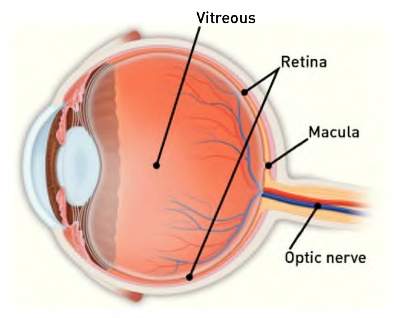Cystoid Macular Edema
A Closer Look
What is Cystoid Macular Edema?

Cystoid macular edema, commonly called CME, is a disorder that affects the retina, the layer of lightsensing cells lining the back of your eye.
The retina converts light rays into signals, which are sent through the optic nerve to your brain where they are recognized as images. CME is the presence of multiple fluid-filled, cyst-like (cystoid) structures in the macula, the central part of the retina responsible for central (detail) vision. The result is swelling (edema) of the macula.
What Causes CME?
Although the exact causes of CME are not known, it can be associated with:
- Retinal vein occlusion (blockage of a blood vessel in your retina)
- Uveitis (inflammation of the uvea, the outermost layer of your eye)
- Diabetes
- Eye surgery
- Eye trauma
- Side effects from medication
It most commonly occurs after cataract surgery. About 3 percent of all cataract surgery patients will experience decreased vision due to CME, usually within a few months after surgery. If CME occurs in one eye, there is an increased risk that it will also occur in your other eye.
What are the Symptoms of CME?
The most common symptom of CME is blurred or distorted central vision. CME does not affect peripheral (side) vision. Other symptoms can include pink-tinted or dim vision, or sensitivity to light. Sometimes CME may be present when no visual loss occurs.
How is CME Diagnosed?
Your ophthalmologist (Eye M.D.) may discover you have CME after a thorough medical eye examination, usually after taking special photographs of the eye using fluorescein angiography or optical coherence tomography (OCT).
How is CME Treated?
Depending on the cause of CME, treatment may include some of the following methods:
- Anti-inflammatory eyedrops (steroidal and nonsteroidal)
- Injection of steroids (short- or long-acting) into the eye
- Laser surgery to repair leaky blood vessels
- A surgical procedure called vitrectomy to remove a substance in the eye called the vitreous (a gel-like substance that fills the body of your eye)
- Anti-inflammatory or immune-suppression pills
Fortunately, most patients with CME are successfully treated and vision improves, though the healing process may be slow and take up to several months.




